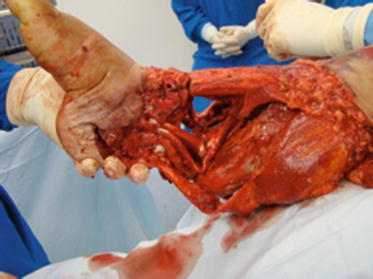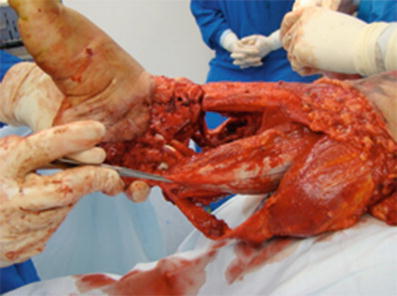Fig. 1
Clinical photograph of the patient after damage control external fixator has been placed. The patient had severe crush injury to the distal leg with nonviable skin and muscle
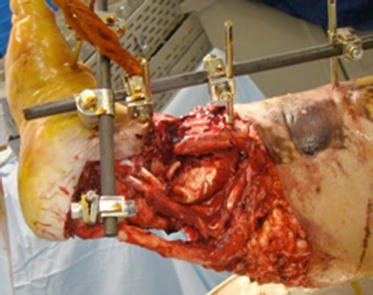
Fig. 2
Clinical photograph of the patient post-debridement. Extensive debridement was necessary to remove any nidus for future infection that would compromise limb viability
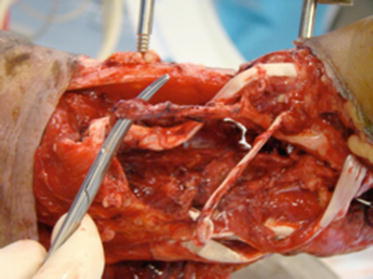
Fig. 3
Intra-operative photograph after identification of at-risk structures (neurovascular bundle)

Fig. 4
Damage control external fixator maintained for limb stability during initial reconstructive efforts
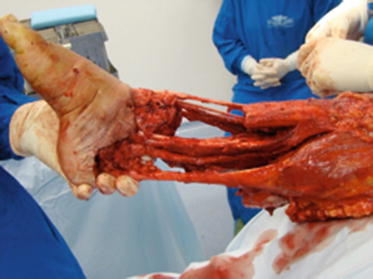
Fig. 5
Clinical photograph of the patient’s limb post-debridement. Note the circumferential skin, subcutaneous tissue, muscle, and bone loss
3 Preoperative Problem List
1.
Severe trauma to the leg with circumferential skin, muscle, and bone loss
2.
s/p type IIIC distal tibia fracture
3.
Exposed neurovascular structures
4.
Distal tibial bone loss
5.
Loss of ankle joint
4 Treatment Strategy
Aggressive damage control orthopedics. This involves limb stability with “trauma” external fixator, serial debridements, early soft tissue coverage, and dead space management.
Acute shortening technique to decrease the bone and soft tissue defect.
“Orthoplastic” approach. Early involvement with a plastic and reconstructive surgeon experienced in limb salvage is critical.
Soft tissues stability and multiple muscular flaps.
5 Basic Principles
Immediate antibiotic therapy
Stabilization of bone and soft tissues at index surgery
Staged use of circular external fixation , especially if free flaps are necessary (limits surgical exposure for plastic surgeons)
Early bone coverage with muscular flaps
